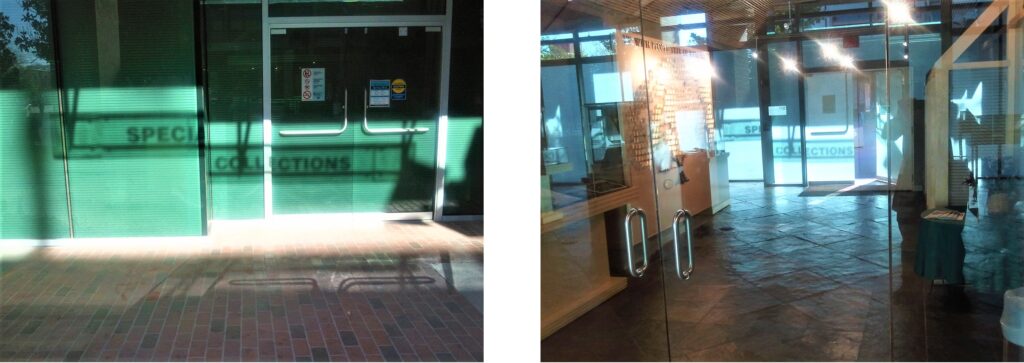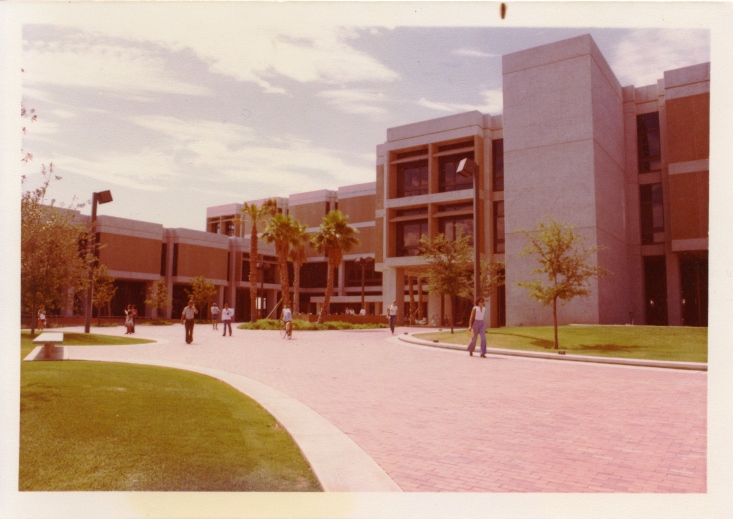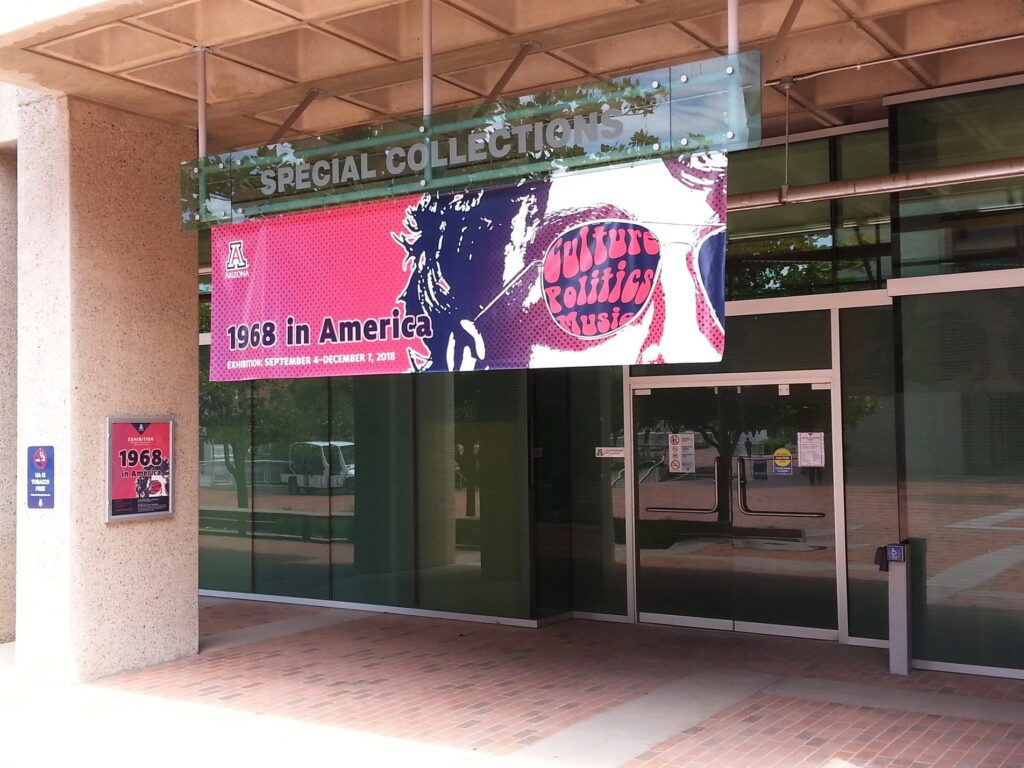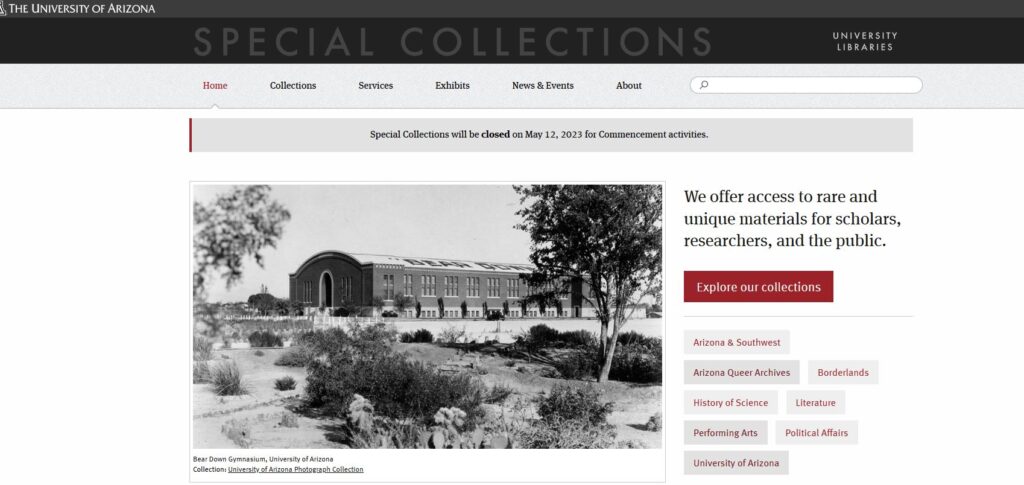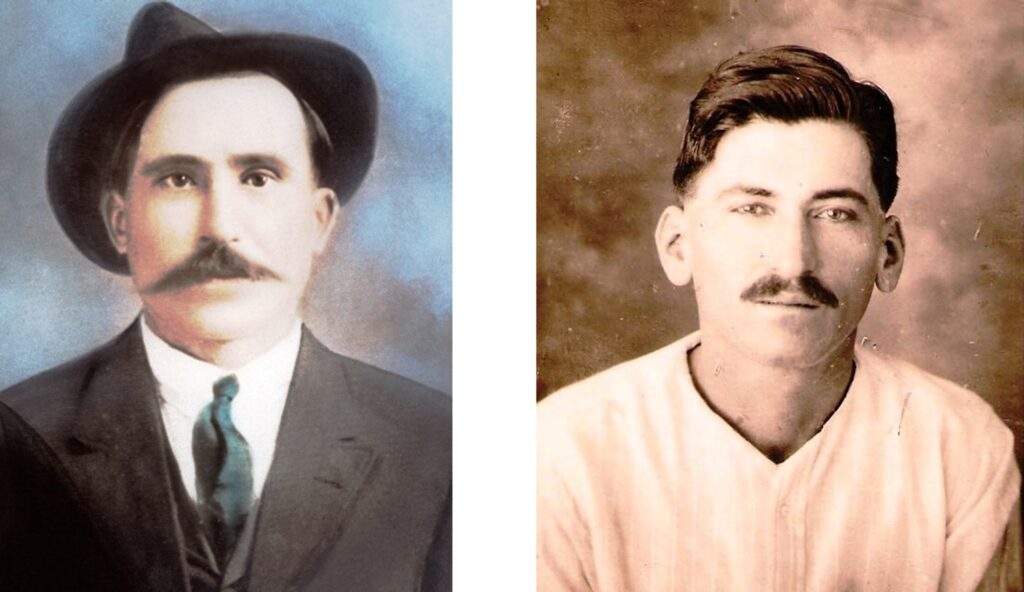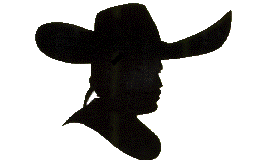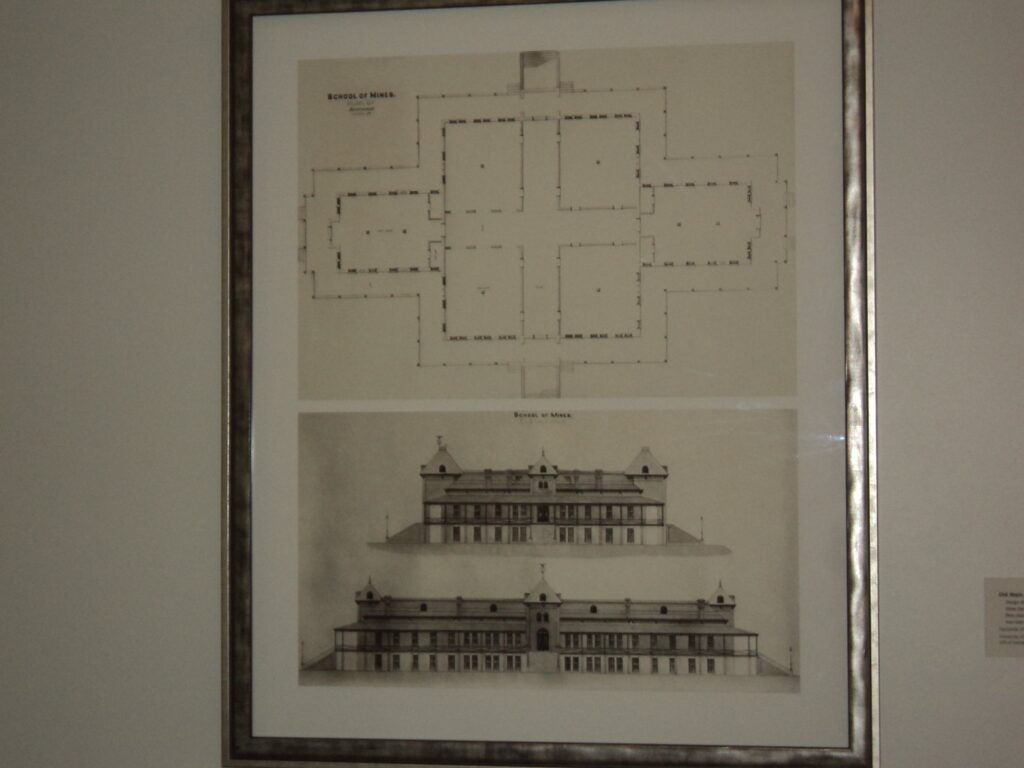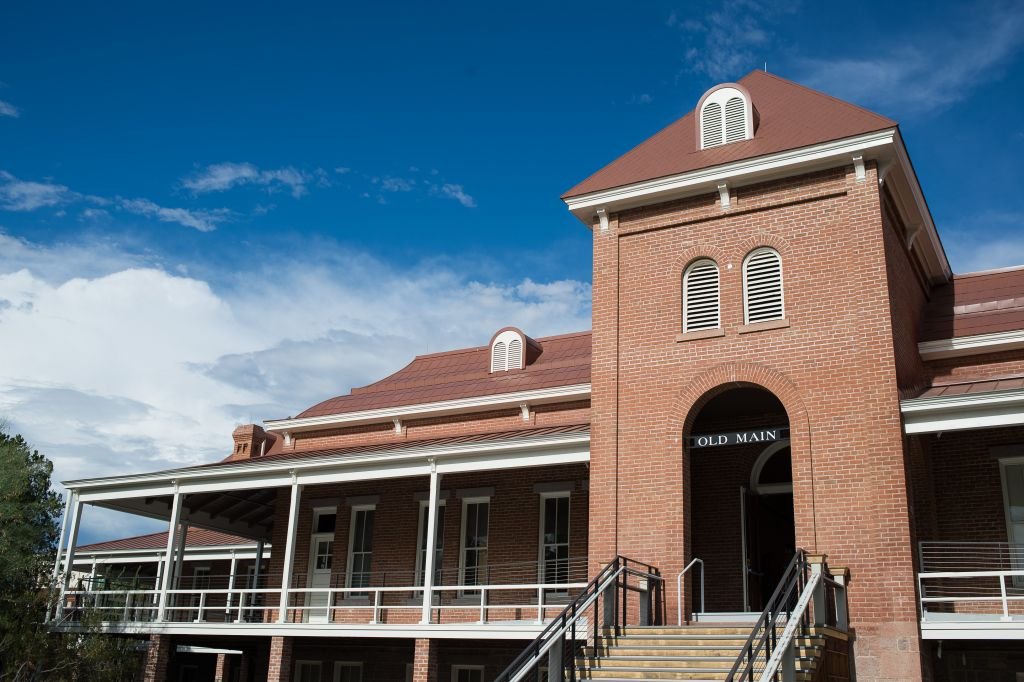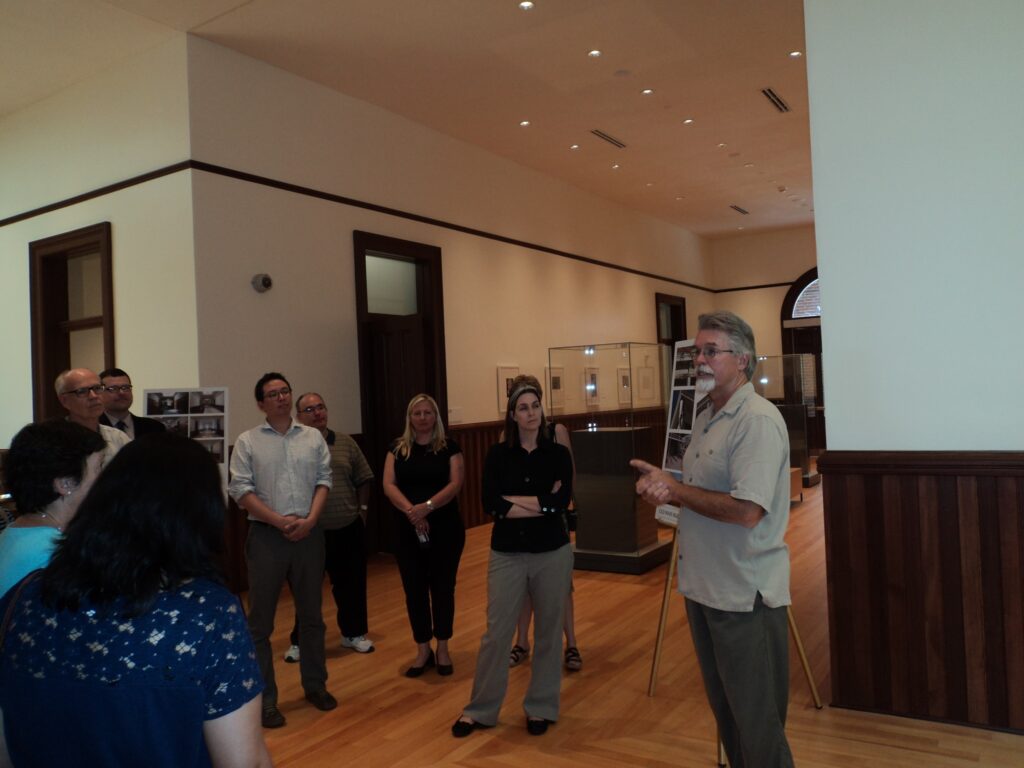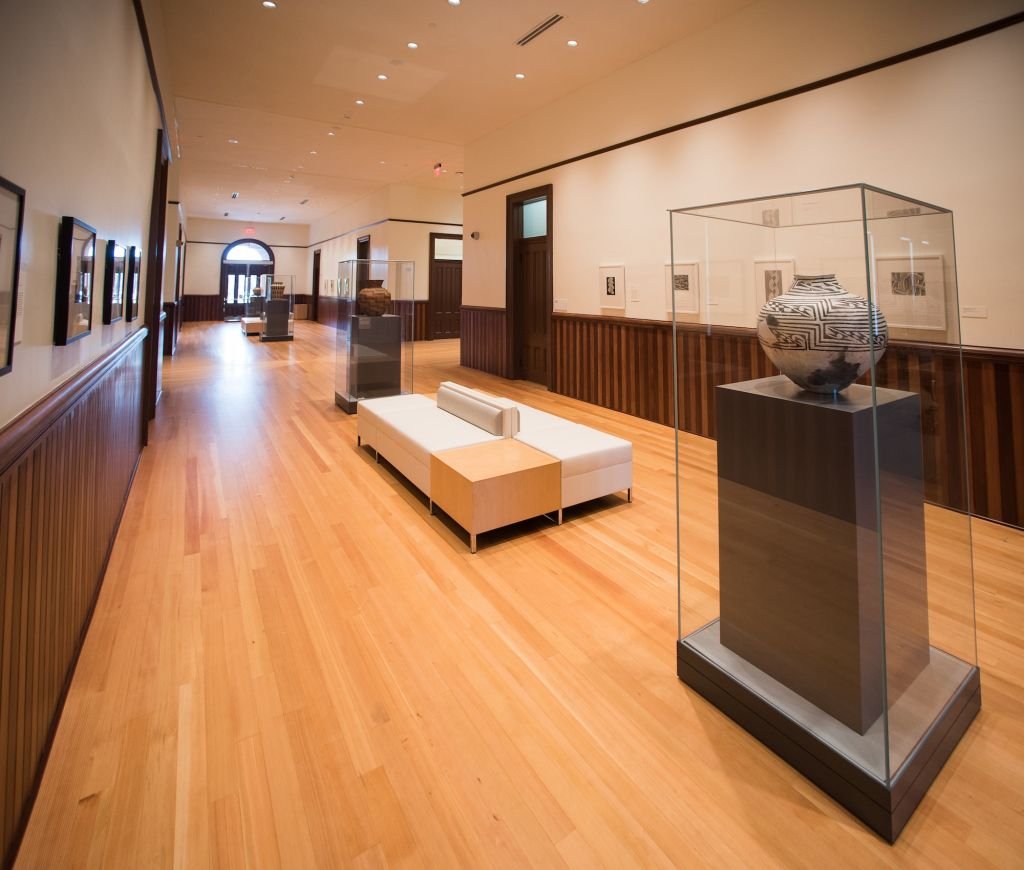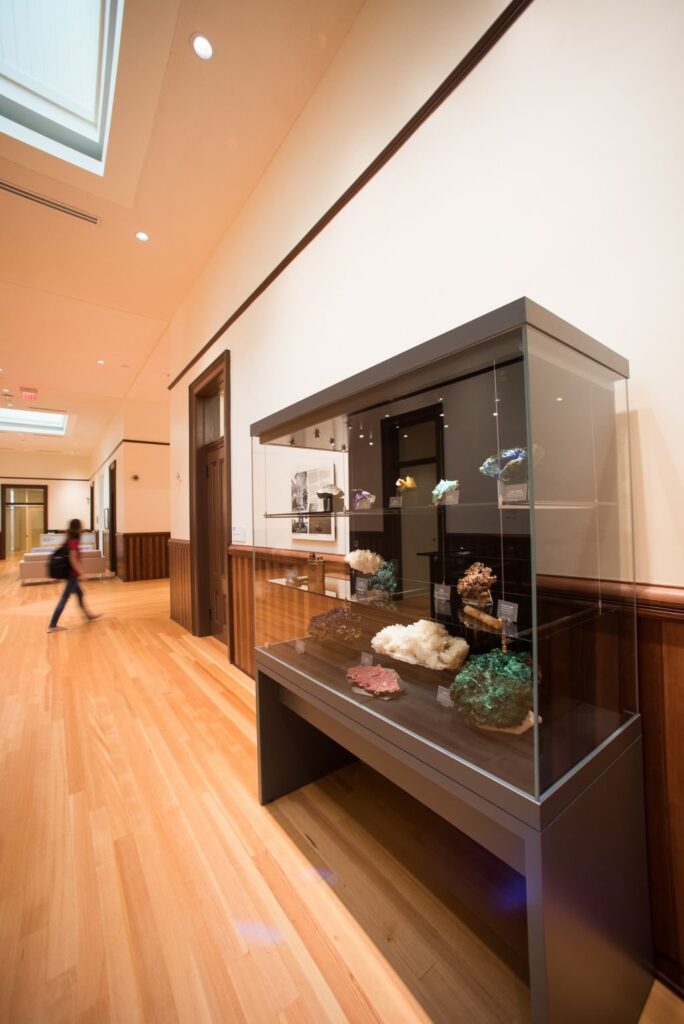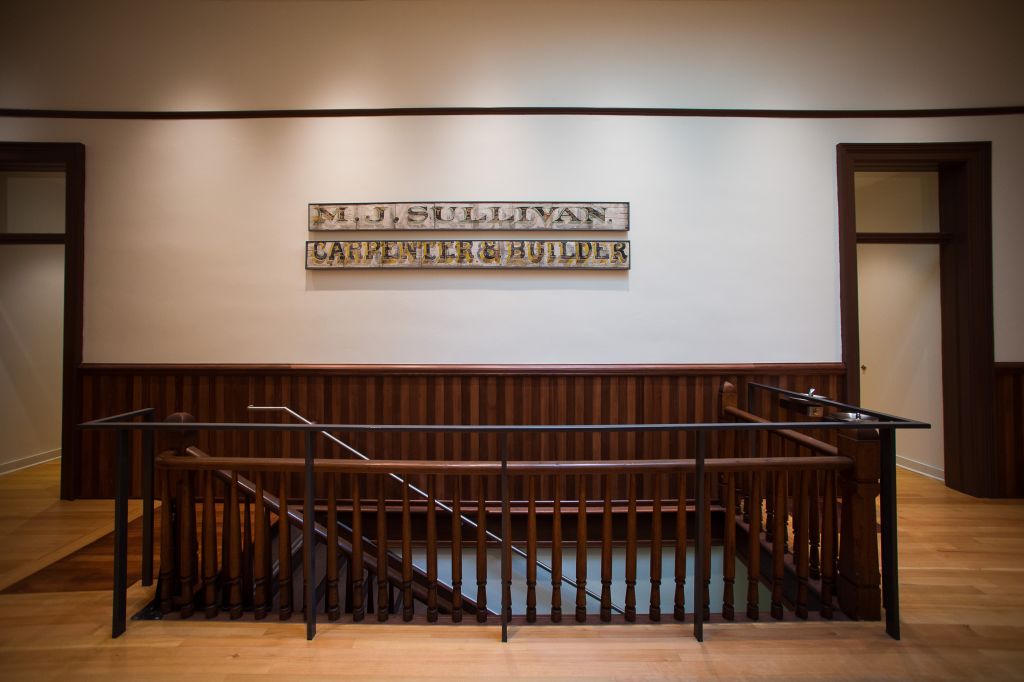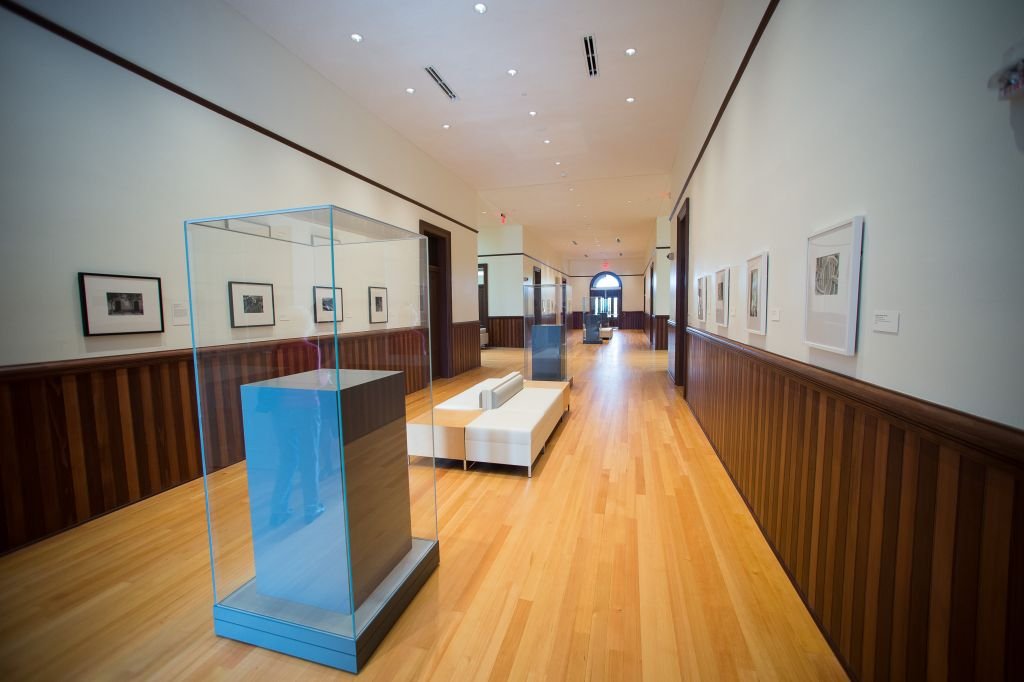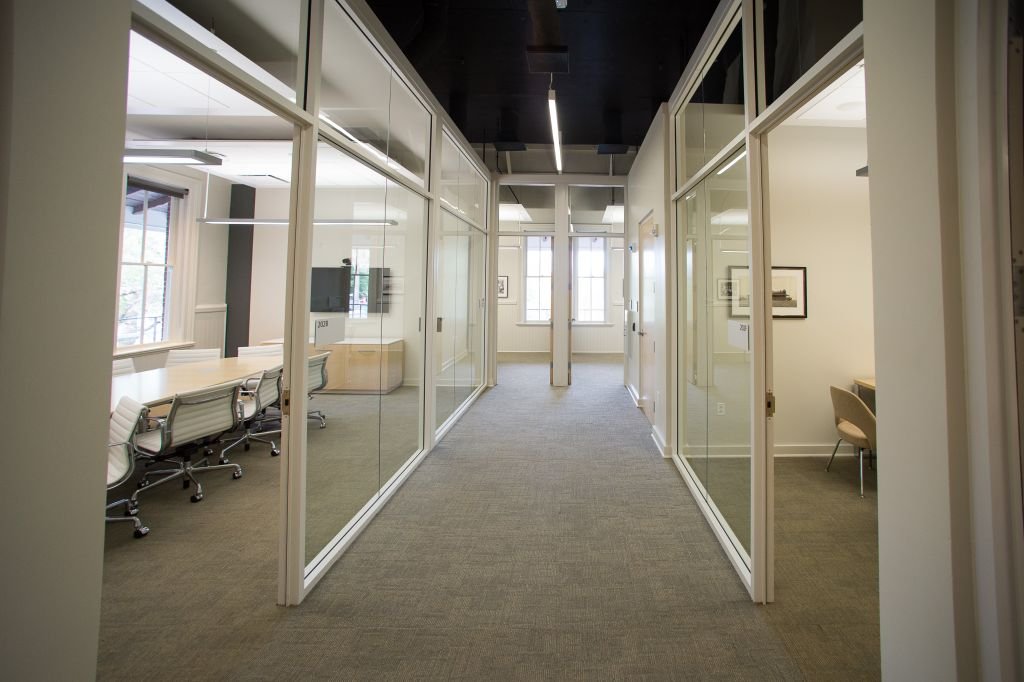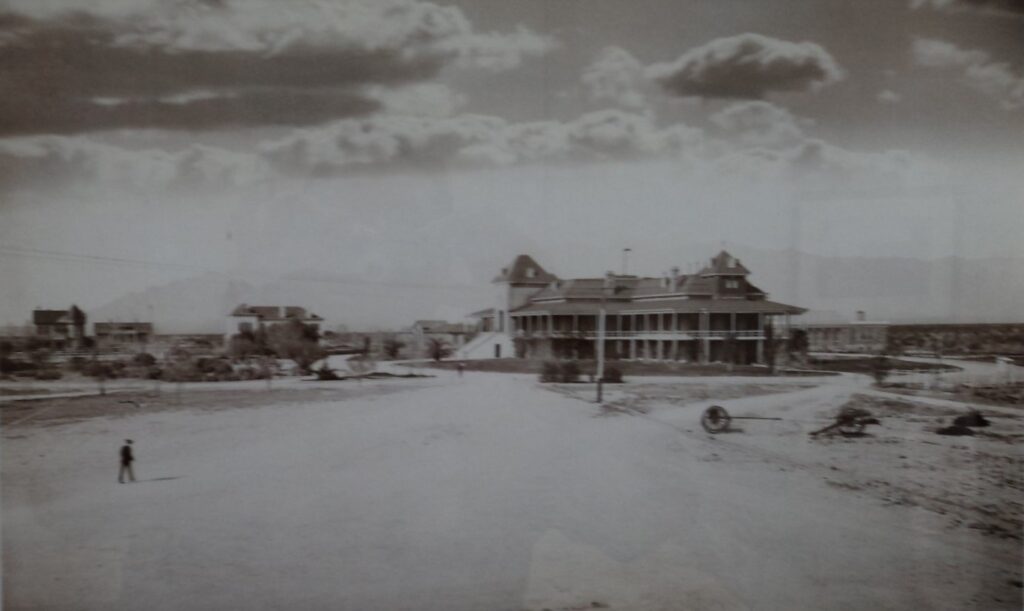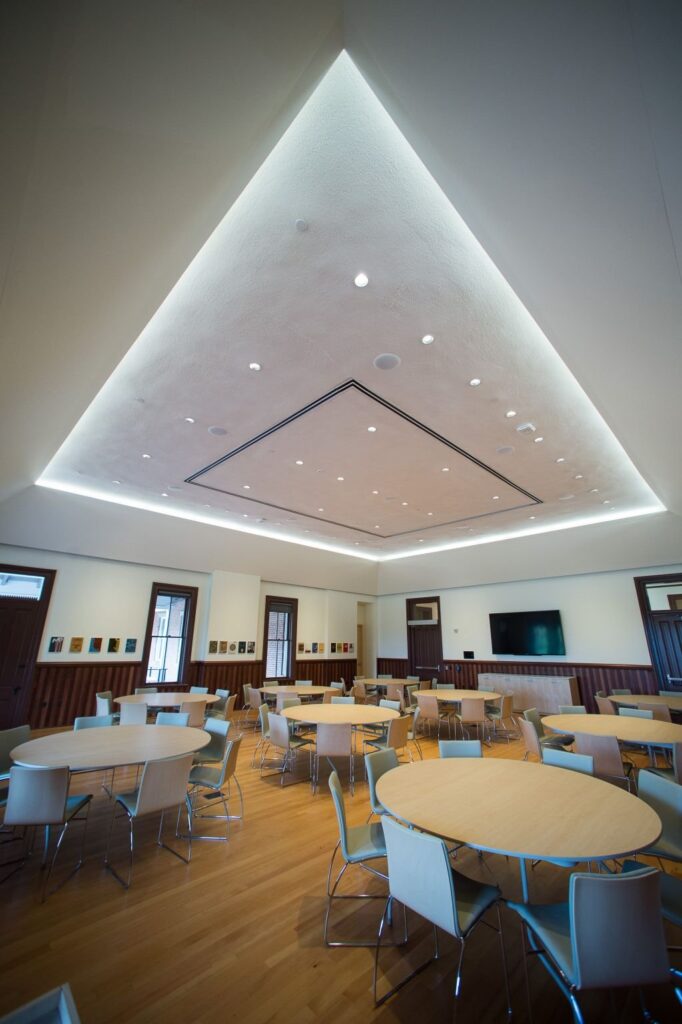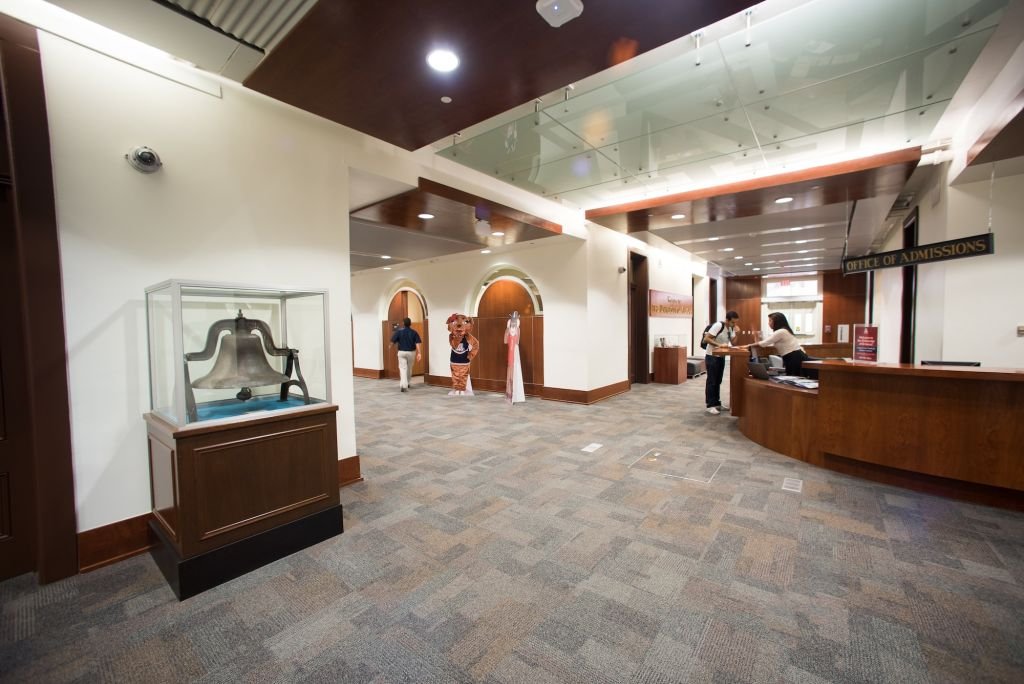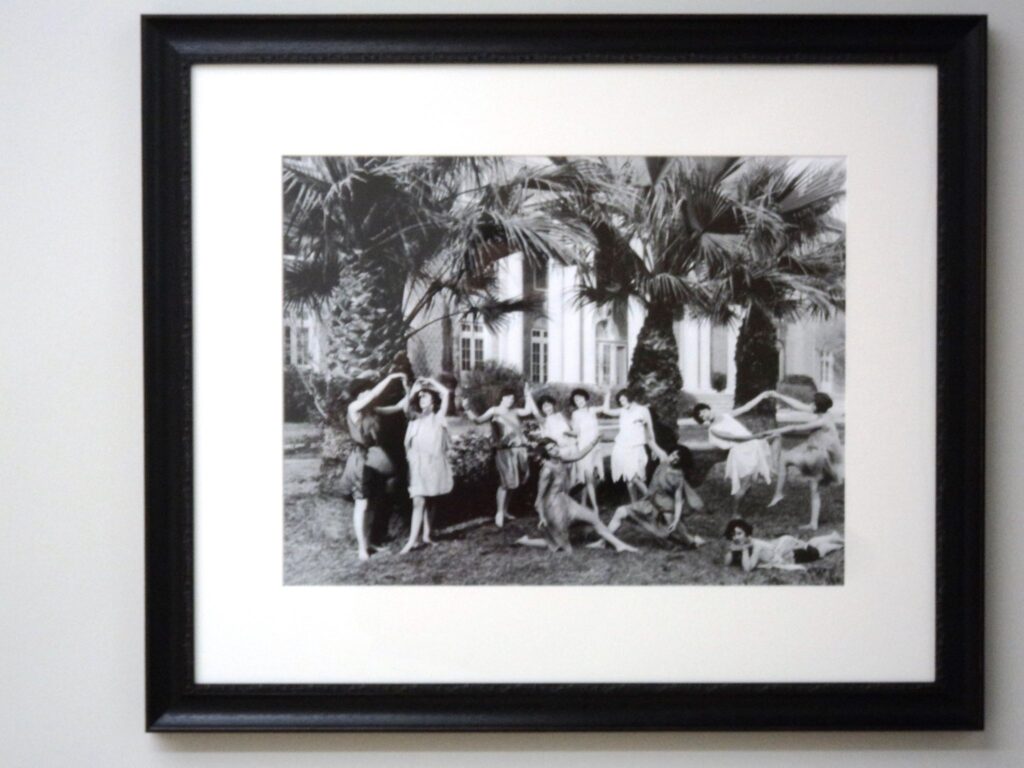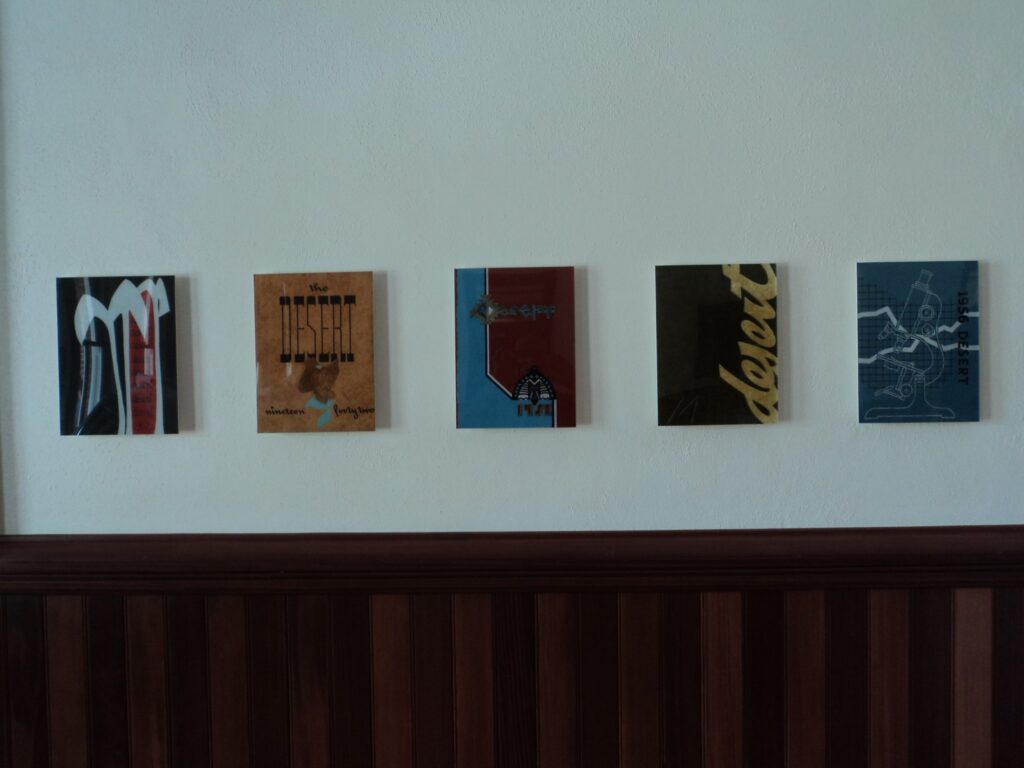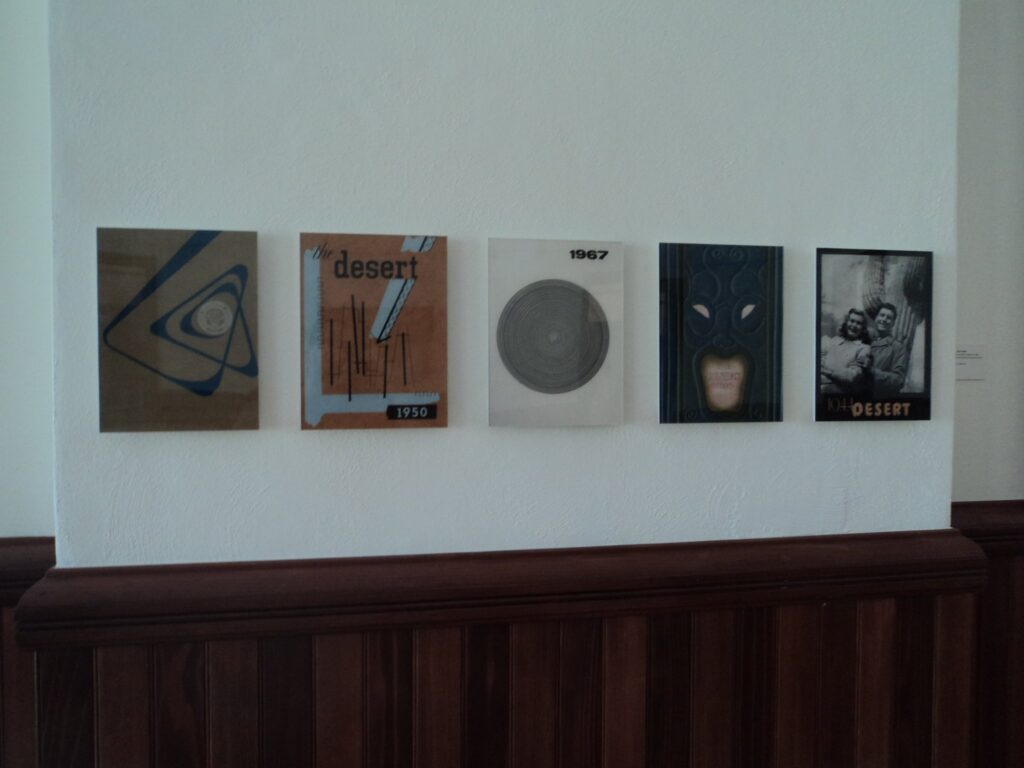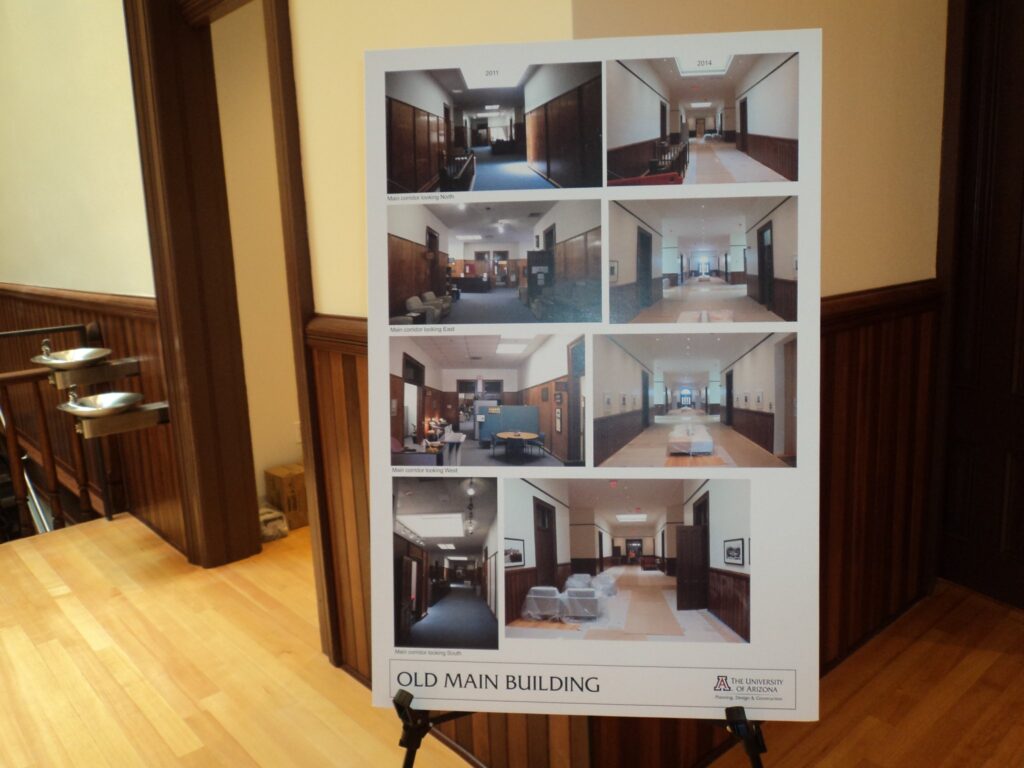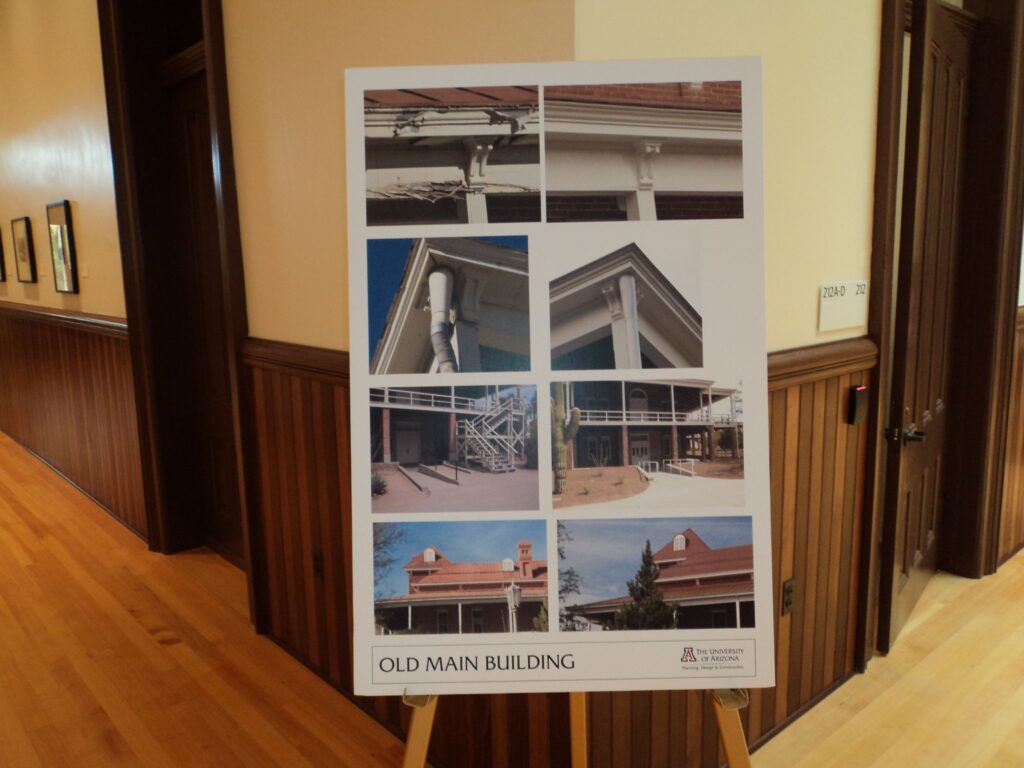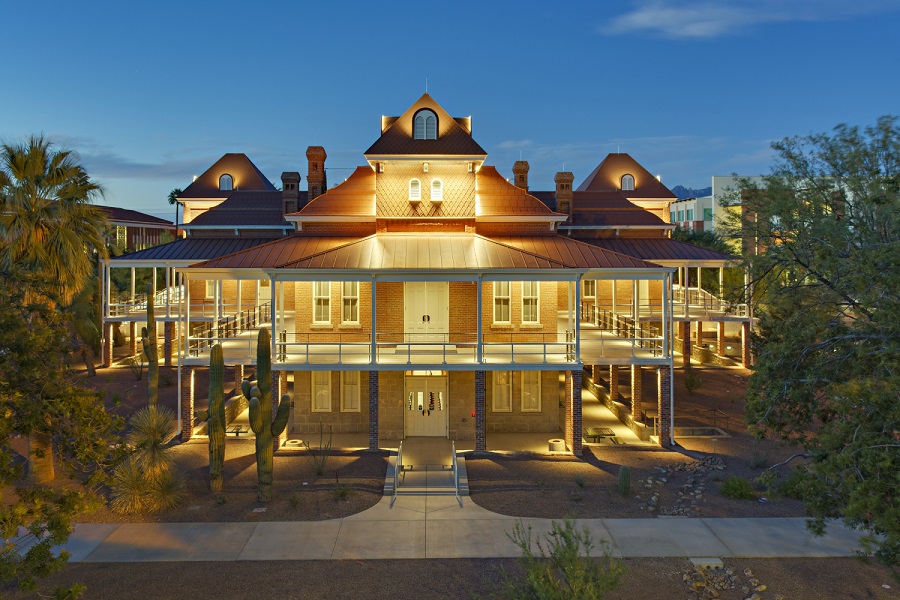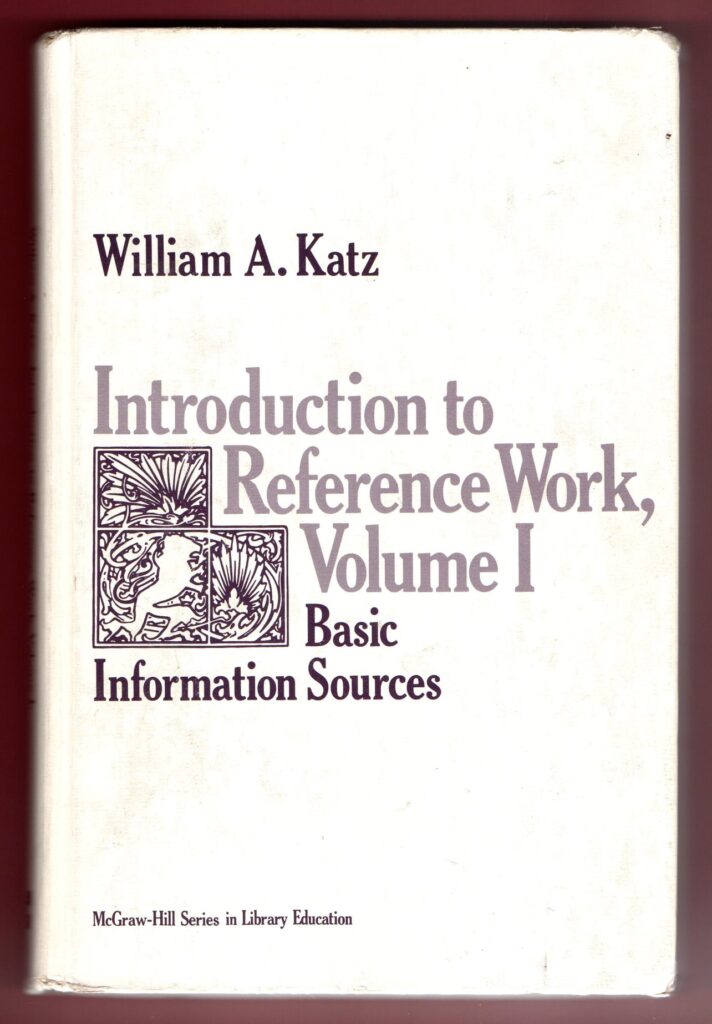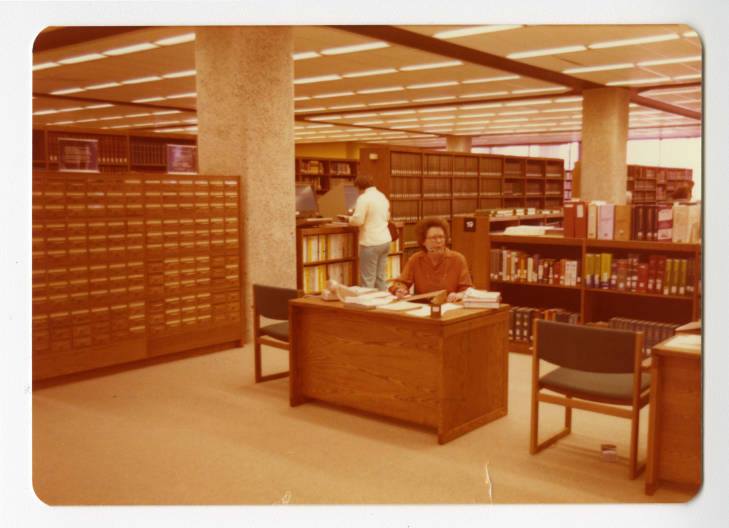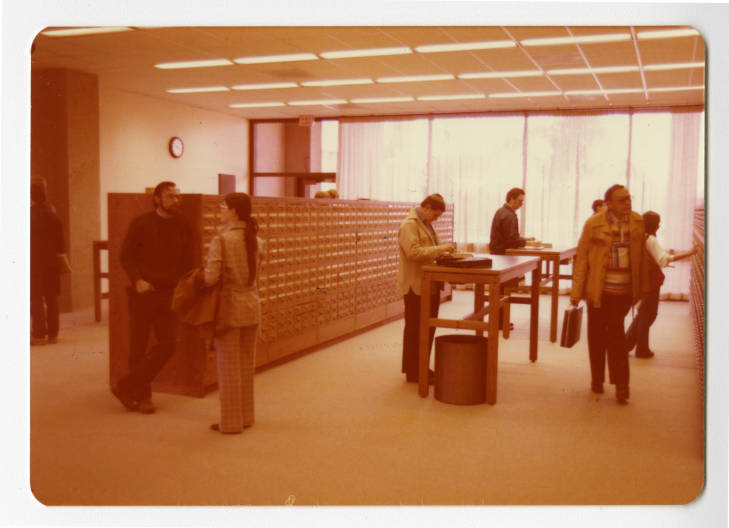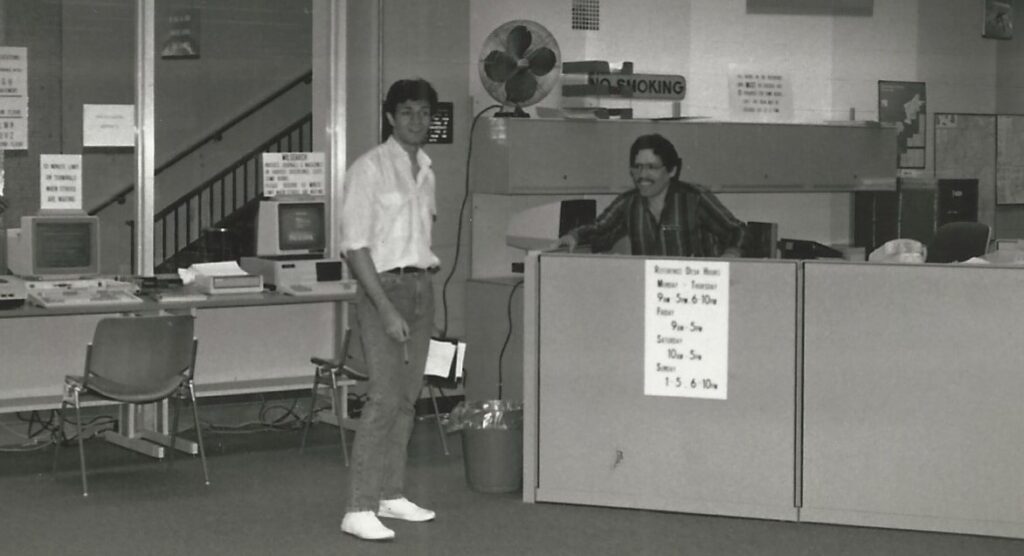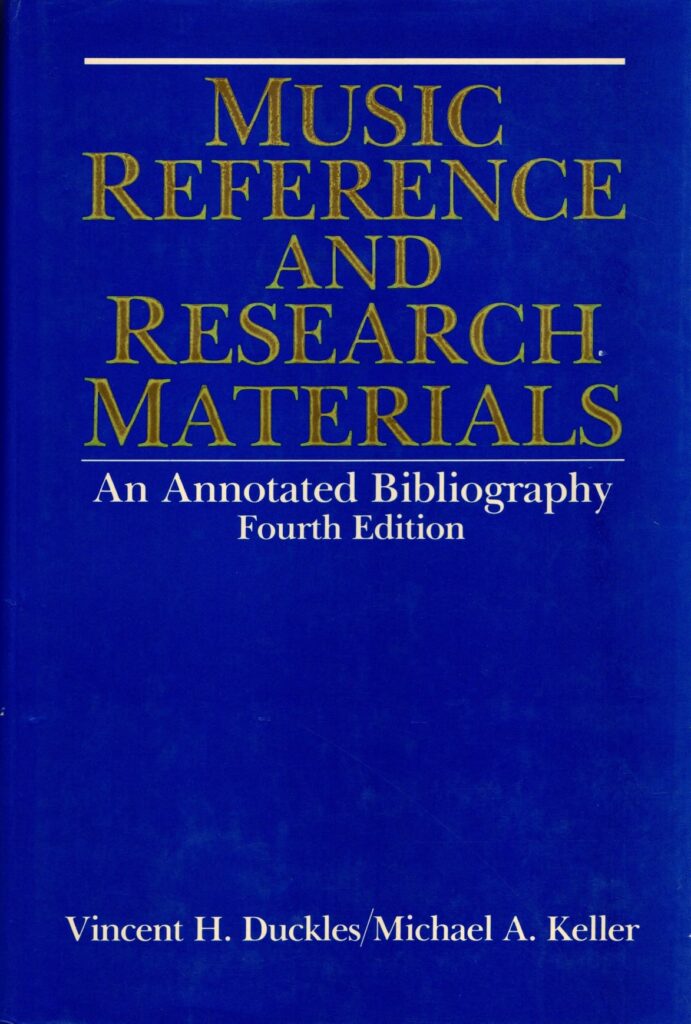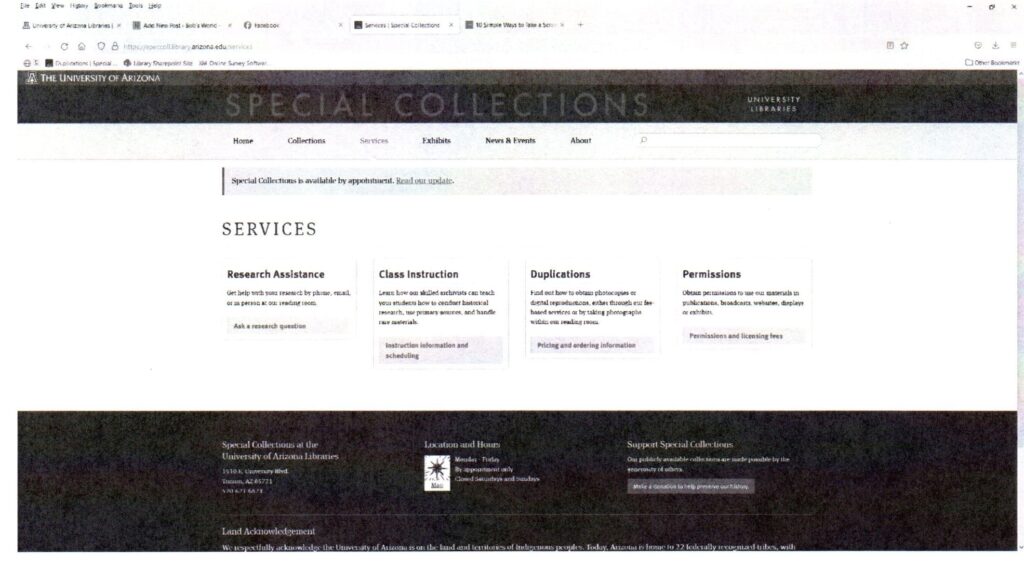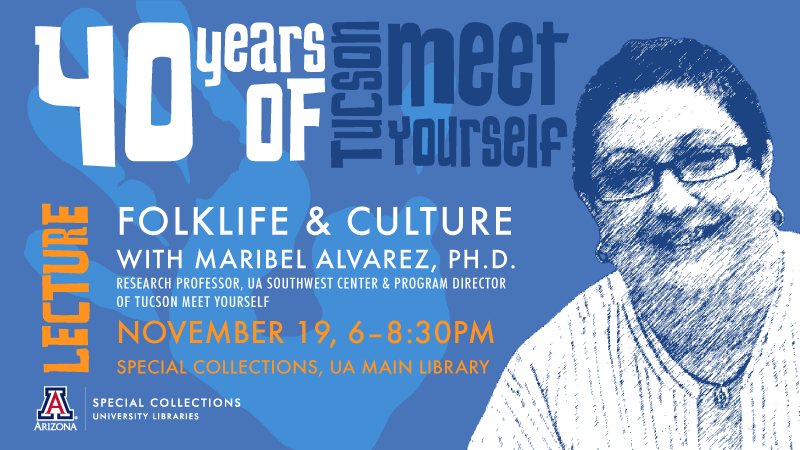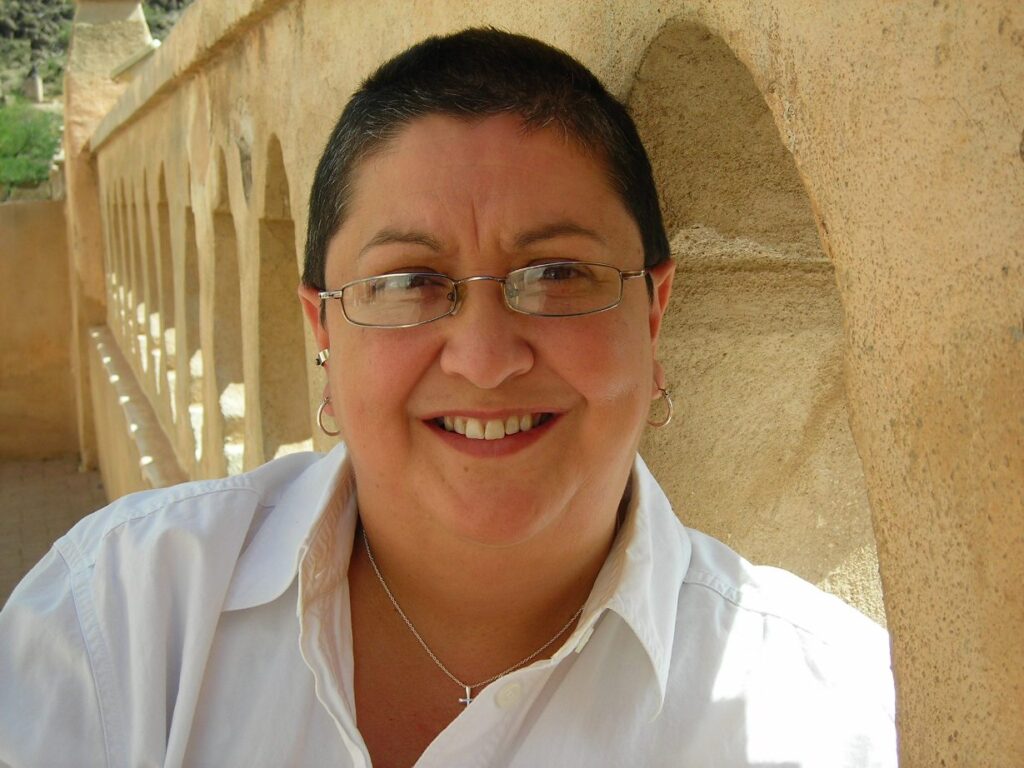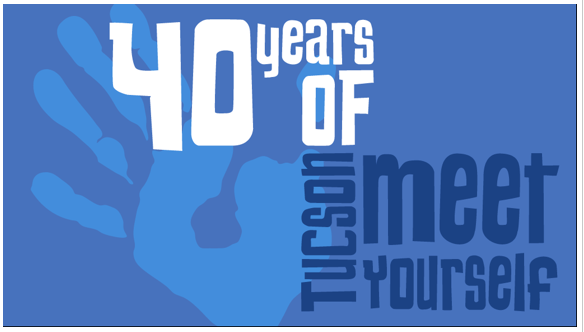Welcome to the University of Arizona, the University Library and Special Collections!
What I will cover in today’s session:
Today I am going to provide an introduction to the UA Libraries and how to access materials using our online website and other tools. More specifically, I will focus on materials housed in Special Collections. I will also give you the opportunity to get some hands on experience using our materials, and if there is time, we will take a brief tour of the facility. By the end of today’s session, you should be able to know what kinds of information you can find here, as well as how and where to look for and locate materials that will aid you in your genealogical research.
About the University of Arizona Libraries
We are a major research library with a strong focus on Latin America and the Southwest. We’re also a major repository for federal government information. We have millions of items, including books, journals, documents and materials in every format imaginable. For the past 15 years or so our emphasis has shifted from a focus on building physical collections to providing access to collections via regional and national consortia or electronic access. We provide access to newspaper and journal/magazine literature through our subscriptions to various online indexes and full-text journal collections. We invest a lot of funds into Inter-library Loan.
For more information about our library see our “About Us” page and our page on UA Library history.
About Special Collections
Established in 1958, Special Collections is home to rare books, archives, and manuscript collections, photographs, maps and multimedia materials owned by the University of Arizona Library. We have primary research material in a wide variety of subject areas, including these areas of particular focus: Arizona and the Southwest, with a strong emphasis on mining and ranching, the U.S.-Mexico borderlands, literature, political affairs, the performing arts, the history of science, University of Arizona history, and architecture. We are currently open to the general public Monday through Friday from 9am to 4pm. One need not make an appointment to visit, but it is strongly encouraged that one be prepared with lists of materials to request before arriving. We have limited staffing available at our front desk and prefer to have patrons make appointments with individual specialists in advance if in-depth assistance is required. To find a specialist in your area of study, contact us using our online research request form, available here.
Community member access to the UA Libraries
Our libraries provide a wealth of information and for the most part, as tax-paying, community members you have access to all of it.
Community members can:
- Use non-reservable spaces at the libraries during public hours
- Request a computer card to use the 6 public computers at the Main Library
- Use library databases when logged into the UAGuest wireless network anytime at any location on campus
Community members can also apply for a library card ($50 per year) to check out up to 25 books, journals, and documents at a time and use additional computers at the library. You can also place holds on materials.
Community members cannot remotely access databases, borrow laptops and technology, or reserve rooms and spaces, even with a library card.
The UA Libraries Website (https://lib.arizona.edu/)
The UA Libraries website is your gateway to the world of information. The more comfortable you are navigating it, the easier it will be to find materials in our collections and beyond. The key to mastering how to navigate this site is practice. (Think of Family Search or Ancestry.com. It probably took you several bouts of trial and error searching before you were able to use these sites effectively. The same principle applies to the UA Library website.) There are many links and layers to this website. It provides access to books, journal literature, full text material and a wide array of other products and services. I will provide a quick overview for you today, but it will be up to you to go back to it and explore it further. I encourage you to take time to learn how to find books and journal literature. There are a variety of easy-to-use tutorials embedded within the site that can help you learn how to be an effective researcher.
I will quickly review the various sections of the site for you, but we do not have time to go into a lot of depth.
Sections:
At the top: Services by category. Find Materials/Borrow and Request/Study and create/Research and Publish/About us/Ask Us-Chat
In the middle: searching tools (books, articles etc). Information about Library hours
Next: News and information about our public programs and exhibitions
Information about our branches. Information for specific populations, including alumni and visitors.
A closer look at access to primary research materials and newspaper access.
Local newspaper access is spotty. Online databases available through the UA Library only cover selected years of the Arizona Daily Star and the Tucson Citizen. There exists a paper index to the Arizona Daily Star that also only covers a specific time frame. The best source that I have found for finding information in these newspapers is Newspapers.com, a commercial database available via subscription. I pay about $140 a year out of my own pocket for access to it because it is an indispensable resource. One can get a 2-week trial subscription to it before the service is cut off or payment is made to continue.
The UA Libraries have digitized a number of local Spanish-language newspapers including El Tucsonense. The search platform for these newspapers is not the best, however. The Arizona Memory project also provides access to El Tucsonense, I prefer using that one.
All of our newspaper databases: https://libguides.library.arizona.edu/az.php?t=38638
Historical Research: https://libguides.library.arizona.edu/type/historical
The Special Collections web page. https://speccoll.library.arizona.edu/
As with the UA Library website, the Special Collections site has various sections, drop down menus, and a lot of information embedded underneath the surface. I encourage you to explore this site, as once you can navigate it well, you’ll be able to find just about everything housed in Special Collections here. We have a number of digital collections and exhibits that I encourage you to view and explore, including many digital photos of the University and southern Arizona.
The top portion of the website provides access to information about our collections (including digital collections), services, news and events as well as information about Special Collections.
The middle portion of the site is where one can find information about our collections by broadly arranged topics.
The next two sections feature information about our exhibits and events and news from our department.
About our manuscript collections and other specialized materials
There are a variety of ways to access our archival collections, including using our online catalog, doing a google search, using our Special Collections page, or other sources like Arizona Archives Online. Collections of manuscript material and personal papers are what are known as primary research resources. These are usually unique items like photographs, letters, diaries, draft manuscripts of publications, business ledgers and other materials.
When we receive a collection, there are several steps involved in the process. We first assess the material to determine if it fits within our collecting scope. If it doesn’t, we politely decline the material. If it does, we go through a lengthy process of preparing the material for public use. We sort the material, disposing of duplicates and other materials that are not “unique”. Then we determine how to arrange the material. We usually try to preserve the donor’s original order of material, but sometimes the material has to be organized by a staff member. We categorize, re-house the material into acid-free folders and boxes, inventory the materials, and keep track of what is in a collection, using ArchivesSpace. We do this by creating what is called a finding aid or collection guide. Nearly every archival/ manuscript collection in Special Collections has a corresponding collection guide. Here is a description of a typical collection guide: Using Collection Guides.
When you visit Special collections, there are various protocols that we ask you to follow. A list of do’s and dont’s is available here:
Tools we use to provide access to finding aids/collection guides:
According to the website: “The mission of Arizona Archives Online (AAO) is to provide free public access to descriptions of archival collections, preserved and made accessible by Arizona repositories, including libraries, special collections, archives, historical societies, and museums. Through the collaboration of the Arizona repositories we strive to inform, enrich, and empower the researcher by creating and promoting access to a vast array of primary sources across the state of Arizona”.
About AAO (for more information).
| AAO Contributing Members |
| There are currently 14 institutions throughout the state of Arizona that contribute content to Arizona Archives Online: The Arizona Historical Society: Northern Division Arizona State Library, History and Archives Division Arizona State Museum Arizona State University Libraries, Department of Archives and Special Collections Embry-Riddle Aeronautical University Aviation Safety and Security Archives, Prescott Campus Heard Museum Billie Jane Baguley Library and Archives Lowell Observatory Library and Archives Museum of Northern Arizona Northern Arizona University, Cline Library Special Collections and Archives Peggy J. Slusser Memorial Philatelic Library Sharlot Hall Museum University of Arizona Library Special Collections University of Arizona Libraries. Arizona Health Sciences Library |
The UA Library starting using this product just a few years ago. It is similar to Arizona Archives Online, but a bit more cumbersome to use. It includes some information, such as materials in our backlog, not found in Arizona Archives Online.
Specific Collections that we will explore today:
This list is but a sampling of the various collections where one can find information about people for one’s genealogical research. Samples from these collections will be used in the next section of our session, where you will get hands on experience using our holdings.
Alianza Hispano-Americana Records, 1894-1965, 1920-1950 MS 663. Papers relating to the Alianza Hispano-Americana, which offered low-cost life insurance, social activities, and other services to primarily Mexican/Mexican-Americans living in the United States and Mexico. Founded in Tucson in 1894, Alianza was one of the first organizations to offer life insurance and burial policies to Mexican-American citizens. This collections includes photographs, financial files, correspondence between lodge secretaries, convention files, published materials, scrapbooks, and ledges pertaining to the daily operations of Alianza. Many of the ledgers include membership enrollment information, including members, their addresses, and lodge information.
Arizona and Southwestern Biographical File. The Arizona and Southwestern Biographical File contains biographical sketches, clippings, articles, and miscellaneous documentation of various people from the late 1800’s to the present. Individual files vary in content and size and do not contain photographs. Access to the material is through an index guide arranged alphabetically by surname. Single items on individuals will be found in the general folders for each letter while people with several items have their own folder.
Arizona Copper Company Records, 1882-1922 AZ 146. Business records of the company pertaining to administration of its copper mines which included the Longfellow Mine, Coronado Mine, Metcalf Mine, Clay Mine, and Humboldt Mine. Records include financial journals, ledgers, cost statements; payroll records, including accident reports and industrial compensation; production and sales records and inventories. Also included are records of the Arizona and New Mexico Railway Company; Clifton Hospital; and Metcalf Hospital; which were owned by the company.
Bloom Southwest Jewish Archives Arizona Reference Files, ca. 1850-1998 (bulk 1870-1970). SJA 004. This collection contains wide-ranging types of material regarding Jewish individuals and institutions in Arizona, principally southern Arizona. This material is especially reflective of the late-nineteenth century and the role of Jews in the Arizona Territory. The files consist primarily of newspaper clippings, scholarly and popular articles and excerpts, obituaries, auto-biographical reminiscences, copies of historical records, and correspondence. The bulk of the collection consists of secondary source material.
Catholic Church Diocese of Tucson Diocese Records, 1721-1957 MS 296. The bulk of the records in this collection are holographic sacramental registers that document baptisms, marriages, burials and confirmations of individual church members from 1863 until 1903, from parish and mission churches under the supervision of the Vicariate Apostolic of New Mexico (1850-1867), the Vicariate Apostolic of Arizona (1868-1896) and the Diocese of Tucson (1897-present). Two earlier registers from the Spanish Colonial Period document baptisms, marriages and burials from the missions of Tubac and Calabasas-Tumacacori under the administrative supervision of the Diocese of Durango (1620-1778) and the Diocese of Sonora (1779-1829).
John W. Murphey Records MS 603. This material demonstrates the day-to-day operation of Murphey’s many business ventures. The records contain construction job files, leases and mortgages, promotional and advertising materials, flooring and paint samples and schematics, correspondence, and financial ledgers. Most of the materials pertain to individual construction or renovation jobs between 1926 and 1957, or document the establishment of Catalina Foothills Estates. Also included are payroll records, which may be of interest to genealogists doing research on families in Tucson.
Pima County, Arizona Records 1864-1923 (bulk 1867-1904) Financial accounts, petitions, bonds, reports, leases, deeds, abstracts of titles, tax lists, bids, and correspondence related to Pima County operations. Chiefly records of the Board of Supervisors, such as letterpress copies of correspondence, petitions for appointments to county office, and financial demands and warrants. Other Board records include 1879 orders to incorporate the villages of Tombstone and Arivaca, and papers related to the construction of the first and second County courthouses. Assessor records consist of correspondence and a 1900-1907 block book. School records include financial records, correspondence, and reports. Teachers’ monthly reports indicate number of students enrolled; reports for Florence, 1873, and Tres Alamos, 1874-1875, give student names. School census reports, 1874-1904, list student names, race, whether native or foreign born, and parents’ names. Records of other county offices are from the Justice Court, District Court, Coroner, County Hospital, Jailer, Sheriff, Treasurer, and Election Office. A Probate Court docket dates from 1883 to 1885, and an Arizona tax list is for 1879.
University of Arizona Biographical Files The University of Arizona Biographical File has both photographs and printed materials of numerous UA faculty and staff, dating from 1867 to present. Individual files vary in content and size, containing biographical sketches, resumes, clippings and photographs. Since the photographs are interspersed throughout the collections, not every folder will have images. Access to the material is through this index guide arranged alphabetically by last name. Most individuals have their own folder, otherwise, the information will be found in the general folders for each letter.
Additional resources:
Special Collections Research Guides Subject specific guides created by our curators and student assistants.
Video tutorial for those new to Special Collections . An introduction to our holdings and information about how to use our resources.
Archive Tucson is a project of the University of Arizona Libraries and Special Collections to preserve the stories of our neighbors in Tucson and Southern Arizona. Most of our interviews focus on the second half of the twentieth century. We believe that a knowledge of local history matters: it confers a sense of place, community, and uniqueness. Our goal is to record interviews with a diverse cross-section of Southern Arizonans and ensure that their stories are shared today and preserved for tomorrow. Many of our interviews are online right now, and we’re adding more every month. All interviews are conducted by our resident Oral Historian, Aengus Anderson. If you have suggestions for interesting Tucsonans to interview, you can contact him here.
About me:
My name is Bob Diaz. I am a librarian and archivist here in Special Collections. I coordinate our department’s online reference service and am the curator for our collections in the areas of architecture and the performing arts. I will be celebrating my 31st year on the job here at Arizona on June 1. Prior to starting here back in 1992, I was employed at the University of Michigan Undergraduate Library as a reference and instruction librarian for over 5 years, and I started my library career as a children’s librarian at the Nogales/Santa Cruz County Library in early 1987. I received my Masters of Library Science degree from the University of Arizona in 1986 and my Bachelor of Arts degree in Psychology in 1982, also at the University of Arizona. I was a volunteer disc jockey for KXCI radio, where I hosted a weekly program called the Chicano Connection for nearly 20 years. I put away my headphones in early 2020, just as the pandemic hit. Some of my radio shows can be accessed here. You can learn more about me and my work by exploring these sections of my website:
My Work: Exhibitions, Presentations, Programs, Publications, etc. etc.
While I do not consider myself an expert in genealogy, I have, for the past several years, been doing research on my own family history. I have focused specifically on my paternal and maternal grandfathers’ families, and have written about them on this website. You can learn more about them by clicking on the captions underneath each photo.
